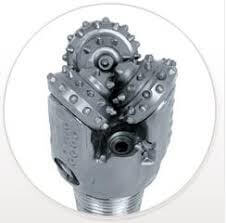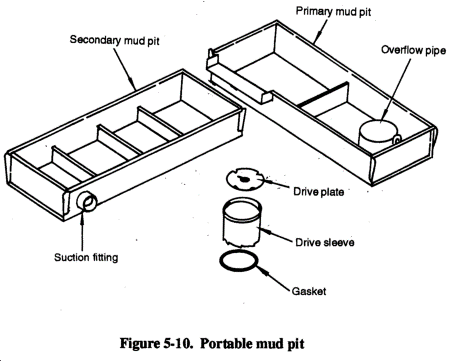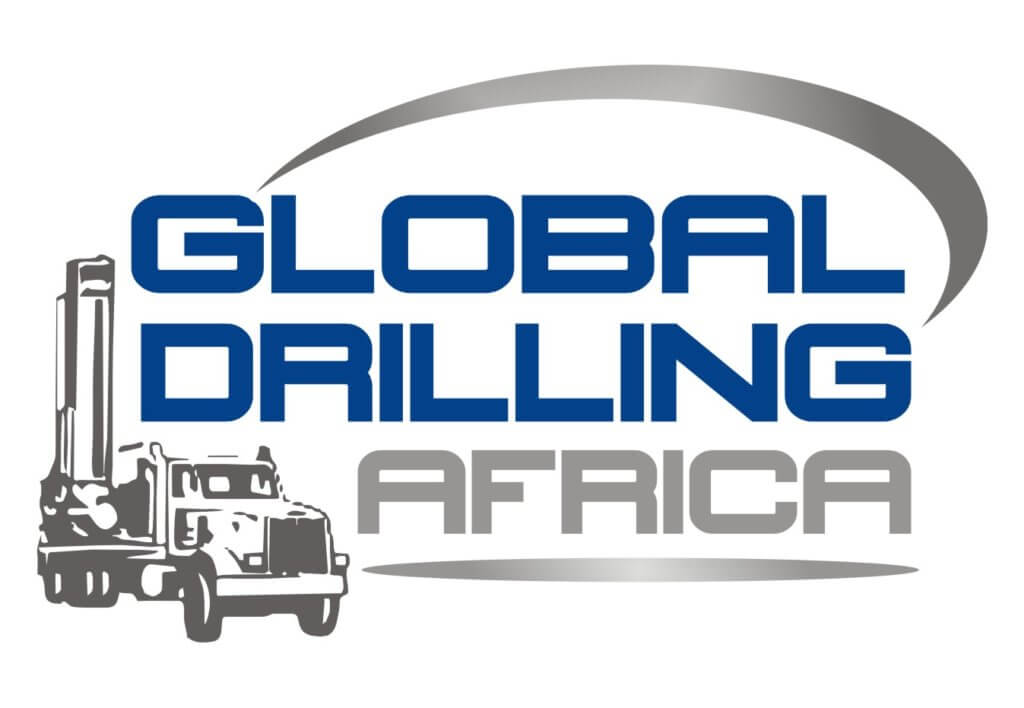Mud Rotary Drilling


Mud Rotary Drilling
Mud rotary drilling is an open hole, fluid based recirculatory method of drilling. The bore hole is advanced in rock and/or sediments by rapid rotation of a drill bit mounted at the end of drill rods.
Developed during the late 19th and early 20th century, mud rotary drilling is one of the main methods of well drilling for water and oil in areas that contain unconsolidated formations. In mud rotary drilling, fluid is pumped down the hollow drill pipe, and forced out of jets in the drill bit (tricone). That fluid then carries the cuttings, or cut materials, through the hole and up to the surface and the mud is reused either through a mud containment system or pit. The cuttings will then settle in a pit. From there, mud will flow from another trench from the pit. A suction hose then re-pumps the mud back into the drill string and bit starting the drilling process over again. As the joint drills deeper, more pipe is added until the hole is finished being drilled.
Drilling fluids most commonly used contain clay additives, in the form of bentonite, or polymer-based additives. Sometimes a combination of the two are used. This fluid also acts as a borehole stabilizer. It helps keep the structural integrity of the hole in place by forming what is known as a “wall cake.” This added support allows for greater well depth.
There are two main types of mud rotary drilling: direct mud and reverse mud. Direct mud drilling is the most commonly used method and is the one described here.
What are the Benefits and Drawbacks of Mud Rotary Drilling?
Mud rotary drilling offers some substantial benefits. It is one of the fastest and most efficient ways of drilling offered today. Rigs that are running efficiently can produce hundreds of feet per day using mud rotary drilling techniques.
This method is suitable for a wide range of soil conditions. In the conditions where air rotary drilling is not feasible, mud rotary drilling will get the job done.
Like anything else, however, there are some drawbacks to using this method of drilling. Mud rotary drilling is slower than some other techniques, such as air rotary drilling. However, mud rotary drilling is more stable, offering more support in order to complete well construction. Air rotary drilling lacks the support of a mud column, causing hole collapses in places of unconsolidated formations. If the drilling mud is not formulated properly, it may contaminate some of the well samples. Some compounds that are typically added to the drilling fluids may also interfere with sediment samples.
Types Of Soil That Can Use Mud Rotary Drilling
This method of drilling is best suited for areas that would generally prohibit the use of air rotary drilling. These geological type areas include: bedrock, sand and gravel formations and broken rock areas. It is actually the preferred method of drilling in sand and gravel.
